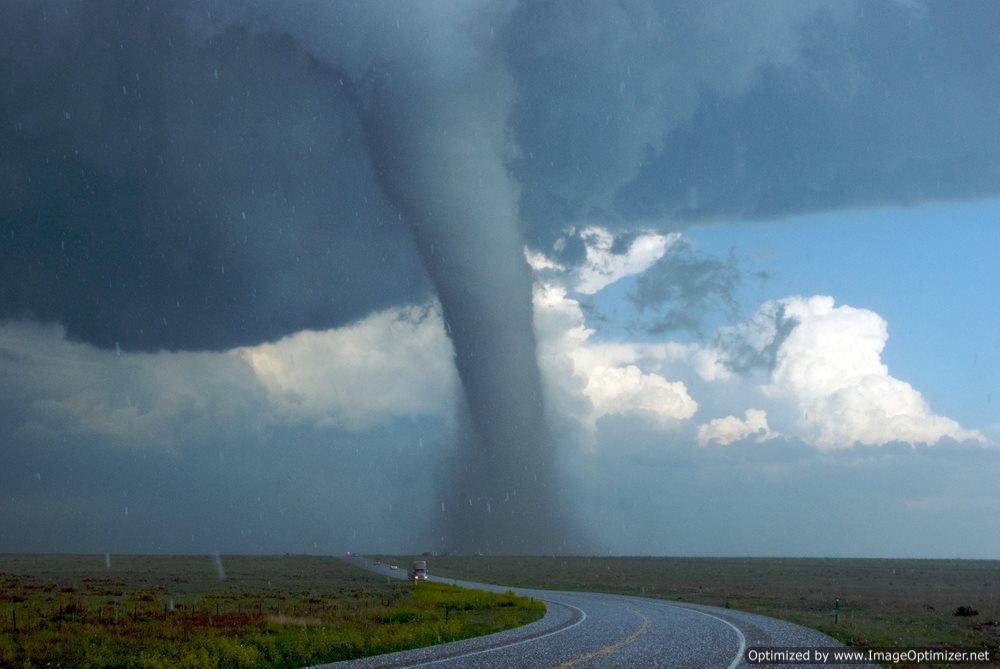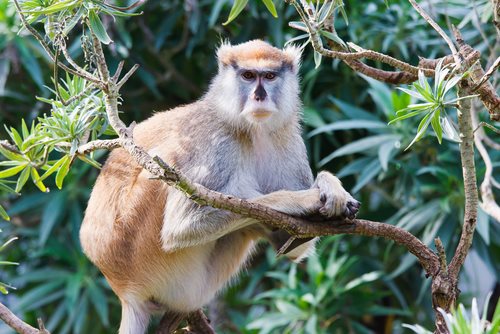Caught in the Act: WalMart Fined $110 Million for Flouting Environmental Laws




On November 23, 2012, the UK Department of Energy and Climate Change (DECC) reached a landmark decision to increase investor confidence and generate 250,000 jobs in the energy sector. The decision, called the Electricity Market Reform (EMR) in the Energy Bill, will address electricity demands through low-carbon technologies in the United Kingdom as about 20 percent of the country’s generating capacity from conventional, carbon-based sources decrease over the next decade.
The EMR hopes to give confidence to certain investors and create government contracts for about £110 billion in investments.
The sections of the Energy Bill allow the following:
· Create a government owned-company to give investors more confidence while investing in long-term contracts called “Contracts for Difference” for low-carbon electricity projects
· Allows auctions for generating capacity from 2014 for the winter of 2018/2019 to make sure peak demand is addressed
· Provides confidence to gas investors to make sure energy demands are addressed (Gas Generation Strategy published with Chancellor’s Autumn Statement)
· Sets a target range for reducing carbon emissions by 2030
The UK’s Climate Change Committee will make suggestions in 2016 during the Fifth Carbon Budget to make sure target ranges are reached by 2030. Until 2016, the government is providing tips to National Grid for different ways to reach lowered emissions ranges by 2030 and even reach target ranges by 2050 in the most economical way. A sample approach for the UK 2050 carbon target is explained in the Fourth Carbon Budget.
Edward Davey, the Energy and Climate Secretary, stated: “They [the Coalition Agreement decisions] will allow us to meet our legally binding carbon reduction and renewable energy obligations and will bring on the investment required to keep the lights on and bills affordable for consumers.”
The decarbonization targets were set by the Climate Change Act of 2008. Together with the decarbonization targets and government-issued contracts, about £9.8 billion in 2020 prices is set aside in the Levy Control Framework. The budgeted investment by the government will decrease dependency on gas imports by establishing renewable energy. By 2020, about 30 percent of the UK’s energy will come from renewables—compared to 11 percent in 2012. The investment will also ensure power from new nuclear energy and commercialized carbon capture.
Davey continued, “The decisions we’ve reached are true to the Coalition Agreement, they mean we can introduce the Energy Bill next week and have essential electricity market reforms up and running by 2014 as planned.”
The shift in public spending by the government, referred to as the Levy Control Framework (LCF), is the responsibility of the Treasury. The spending meets energy and climate goals in line with economic recovery and the least impact on utility bills for consumers.
The spending does not include the ECO or the Warm Homes Discount in the UK. These programs have separate spending limits for 2015.
Source: Department of Energy & Climate Change


On November 13, 2012, the Environmental Protection Agency (EPA) reported that the third consecutive season of dredging on the Hudson River was completed. A total of 1.3 million cubic yards of sediment containing PCBs has been removed from the Hudson River so far.
The dredging began on May 9, 2012 after General Electric (with oversight form the EPA) removed 650,000 cubic yards of contaminated sediment south of Fort Edward, New York. The EPA is now half way to its goal of removing 2.65 million cubic yards of polluted sediment from 40 miles of the upper Hudson River.
The EPA reports that approximately 1.3 million pounds of PCBs went into the Hudson River after they leaked from two General Electric manufacturing plants in Fort Edward and Hudson Falls.
The EPA set strict standards during General Electric’s dredging. The company could not allow more than 2 percent of the dredged PCB-contaminated sediment to stir and become suspended in the water. The first series of measurements were conducted in Waterford. Additionally, the EPA did not allow the company to suspend more than 1 percent of the contaminated sediment by the time the water reached Waterford. Waterford is the farthest monitoring station downstream on the Hudson River.
The company fulfilled a goal of letting no more than 11 percent of the project undergo capping as well. General Electric’s seasonal cleanup only accounted for 5 percent capping in the contaminated area besides capping that could not be prevented.
The dredged sediment is stored at the Fort Edward processing facility and shipped to authorized disposal facilities in other states. The material will continue to be transported out-of-state by train until all of the sediment is removed from the Fort Edward processing plant.
Source: U.S. Environmental Protection Agency

On November 29, 2012, the US Attorney’s Office for the District of Oregon announced that Rebecca Jeanette Rubin from Canada surrendered at the border in Blaine, Washington. She faces conspiracy, federal arson, and destructive device charges throughout California, Colorado, and Oregon. Her crimes are part of the largest eco-terrorism case in U.S. history, and she remained an international fugitive for more than 10 years.
Rubin is charged with being part of a group that caused 20 arsons in five western states from 1996 to 2001. The group was made of self-proclaimed members of the Earth Liberation Front (ELF) and the Animal Liberation Front (ALF). The group attempted to cause environmental damage and fight against government, businesses, and the general public by engaging in violence, mass destruction, intimidation, and other forms of violent retaliation.
Rubin faces state charges in Oregon for the November 30, 1997 and December 22, 1998 arsons at the U.S. Bureau of Land Management Wild Horse and Burro Facility near the town of Burns in Harney County and the U.S. Forest Industries Inc offices in Medford. She also faces a state charge in California for arson and using a destructive device at the BLM Litchfield Wild Horse and Burro Corrals on October 15, 2001 around Susanville, California.
The eight federal charges are for an arson that destroyed the Two Elk Lodge and surrounding buildings in Eagle County, Colorado on November 30, 1997.
A count of arson carries a maximum penalty of 20 years in prison and a mandatory minimum of five years. Using a destructive device carries a mandatory consecutive sentence of 30 years in prison, and conspiracy carries five years in prison.
Since August 2007, 10 defendants in the same case have received sentences from 37 months to 156 months in prison.
Two of the defendants are still fugitives: Joseph Mahmoud Dibee and Josephine Sunshine Overaker.
Source: Federal Bureau of Investigation

On November 19, 2012, the Boise Police announced the arrest of Michael J. Watkins. He is currently in custody of the Washington County Sheriff’s Office in Weiser, Idaho, and the monkey’s death is tied to a break-in and burglary at the Boise Zoo on the morning of November 17, 2012.
Police were called to the Boise Zoo at 4:30 a.m. on November 17 because a guard spotted one man inside the zoo and another outside of the perimeter fence. The two men fled as after they saw the security guard, and a search of the zoo proved the men fled.
When officers and employees searched the zoo, they found a Patas monkey near the perimeter fence inside the zoo. The monkey was severely injured with blunt force trauma to the head and neck, and it died within a short time after discovery.
During the investigation, Boise Police found blood evidence and a baseball cap belonging to one of the suspects. One of the suspects, Watkins, was arrested after the police used different pieces of evidence and tips from helpful citizens.
The Charges against Watkins
Watkins is charged with two felonies: burglary and grand theft.
Burglary is defined under 18-1401 of the Idaho Statutes:
“Burglary defined. Every person who enters any house, room, apartment, tenement, shop, warehouse, store, mill, barn, stable, outhouse, or other building, tent, vessel, vehicle, trailer, airplane or railroad car, with intent to commit any theft or any felony, is guilty of burglary.”
Grand theft is defined under 18-2407 of the Idaho Statutes, and the following subsection applies to Watkins:
18-2407(b)
“A person is guilty of grand theft when he commits a theft as defined in this chapter and when…
18-2407(b)(7)
The property taken or deliberately killed is livestock or any other animal exceeding one hundred fifty dollars ($150) in value.”
Why Patas Monkeys are Protected at Zoos
Patas monkeys are not endangered or threatened, but they are protected for several reasons. For one, they are hunted in areas of Africa for their meat or because they’re damaging crops. Additionally, the growth of cattle grazing in Africa and the increasing amount of farmland in the African savanna areas has seriously decreased the habitat for the Patas monkeys.
Chief Michael Masterson with the Boise Police Department stated: “I speak for many of us in the police department and the community who were angered and outraged over this senseless crime. The loss of this Patas monkey has touched many lives, including our officers and investigators.”
Source: Boise Police Department

A new report, called Trade in South-East Asian Python Skins, was published by the International Trade Centre (ITC) with cooperation from the International Union for Conservation of Nature (IUCN) and TRAFFIC—a program maintained by the IUCN and World Wide Fund (WWF). The new report was published on November 27, 2012 and reveals about $1 billion worth of python skins are traded every year.
Alexander Kasterine, the Head of the ITC Trade and Environment Programme, states: “The report shows that problems of illegality persist in the trade in python skins and that this can threaten species’ survival. The fashion and leather industry has a stronger role to play in supporting the Convention on International Trade in Endangered Species of Wild Flora and Fauna (CITES) and the developing countries to ensure supply is legal and sustainable.”
Since law enforcement is not targeting the problem efficiently, the report stresses that the fashion industry needs to develop a tracing system to see where the products are coming from. Additionally, the tracing system needs to demonstrate that the product is legal and comes from an environment where harvesting of skins is sustainable. A similar permitting system exists, called CITIES, and the new supply chain tracing system would add to the efforts of CITIES.
The report announces there is a lack of transparency in the market. Indonesia, Malaysia, and Viet Nam are the biggest exporters, and about 70 percent of all python skins are re-exported through Singapore. The report suspects that large undisclosed stockpiles of skins could remain in Singapore because of a lack of screening.
The biggest importers of pythons skins are European Union countries—especially Italy, Germany, and France.
Tomas Waller, the Chair of IUCN Species Survival Commission’s Boa and Python Specialist Group, states: “It would appear a substantial proportion of the skins in trade are sourced illegally from wild animals, beyond agreed quotas, and using false permits to launder the skins.”
More than 20 percent of python skins from South-East Asia are marketed as captive-bred, but the report questions the amount of snakes bred in captivity. Furthermore, the report indicates that a large amount of slaughtered wild snakes are killed before they are old enough to breed. The report suggests that minimum skin size limits need enforced along with harvest numbers outside of captivity to maintain sustainability.
Current trade bans and not stopping the illegal harvesting of python skins, so the fashion industry and local authorities need to strengthen regulations before pythons become even more threatened.
The report referenced to in this article was funded by the Government of Denmark.
Source: International Union for Conservation of Nature

On November 20, 2012, the US Fish & Wildlife Service published its annual appraisal of plants and animals for consideration under the Endangered Species Act (ESA). Since the last review in October of 2011, three species were removed from the status of candidate, two were added, and 9 have changed as far as priority.
A total of 192 species are now recognized as a candidate under the ESA. This is the lowest number in over 12 years. Since the Listing Programs implementation, the 25 candidates have been granted protection under the ESA and proposed protections has occurred for 91 species.
Candidates on the list show signs of being threatened or endangered, but species higher up on the list receive more attention that those lower on the list. Candidates are not protected under the ESA, but their candidacy status helps them receive conservation attention.
Once a species becomes a candidate, the results are provided to landowners and resources managers for the state and local municipalities. The Fish and Wildlife Service is currently involved in conservation agreements covering 5 million acres that help protect 130 species.
The two new candidate species are the Peñasco least chipmunk located in the White Mountains of New Mexico and parts of California and the Cumberland arrow darter in Kentucky and Tennessee. The three species that were removed from the candidacy list are the elongate mud meadow springsnail, the Christ’s paintbrush, and the bog asphodel. The bog asphodel no longer needs protection, and springsnail and paintbrush populations have improved according to the Fish and Wildlife Service.
Dan Ashe, the Fish and Wildlife Service Director, explained the Service’s ultimate goals: “We’re continuing to keep the commitments we made under this agreement, which has enabled us to be more efficient and effective in both protecting species under the ESA, as well as in working with our partners to recover species and get them off the list as soon as possible. Our ultimate goal is to have the smallest Candidate List possible, by addressing the needs of species before they require ESA protection and extending the ESA’s protections to species that truly need it.”
The Fish and Wildlife Service can help protect candidate species in several ways. For one, grant programs provide conservation funds to private landowners as well as states and territories. Secondly, Candidate Conservation Agreements (CCAs) make sure public and private parties perform their share of conservation efforts—like removing threats to the species or stabilizing the specie’s environment. Candidate Conservation Agreements with Assurances (CCAAs) are agreements between the Service and non-Federal landowners.
A complete list of the candidate list can be found on the Fish and Wildlife Service’s website.
Source: U.S. Fish and Wildlife Service

The 18th Conference of the Parties of the United Nations Framework Convention on Climate Change (UNFCCC) began on November 26, 2012. The United Nations has warned that strict policies and pledges are required during the conference to keep temperatures from rising more than 2 degrees Celsius by the end of the century.
Without the emergency adoption of tighter emissions controls, the world’s temperature could increase as much as 5 degrees Celsius by 2100, putting water security, food security, economic security, and human security at risk—especially along coastal cities.
Conservation International (CI), headquartered in Washington, D.C, indicates the conference needs to address at least three areas to curb the impending realization and risks of rising global temperatures.
For one, the conference needs to add to the Kyoto Protocol (the only international emissions treaty) to reach international goals by 2015.
Secondly, new public funding needs to come from developed countries to help developing countries adopt infrastructure and policies to reduce climate change.
Thirdly, the conference needs to allow developing countries to add to existing actions that reduce the destruction of natural environments. CI notes that specific action needs taken in REDD+ areas (Reducing Emissions form Deforestation and Forest Degradation). These areas receive compensation for keeping forested areas protected and reducing emissions associated with deforestation.
Dr. Fred Boltz, the Senior Vice-President for International Policy at CI, reported on the three imperative goals at the conference: “These are the pillars of a successful plan to stabilize the climate, one with increased commitment for immediate actions to avoid catastrophic levels of global warming, and which harnesses the power of nature itself to ensure that humans and all species may adapt to climate change.”
Boltz went on to say, “This year’s conference is crucial because many of the negotiations which have been taking place since 2007 will draw to a close. We need to make sure the progress that has been made over the past five years is not lost.”
The “progress” that Boltz refers to is funding made from developed countries in Copenhagen in 2009. The $30 billion that was pledged is expiring at the end of December, 2012, and no pledges have agreed to continue the funding. The goal was to pledge $100 billion internationally per year by 2020.
Conservation International is now asking for $60 billion in pledges from 2013 to 2015 that will double the “fast start” funds agreed to in Copenhagen.
Boltz raised concern over the lack of pledges: “The debt problems facing several wealthy nations make it more challenging for them to put money on the table. But, if funding is not provided now, the future costs of inaction will be prohibitive in both financial and human terms.”
Source: Conservation International